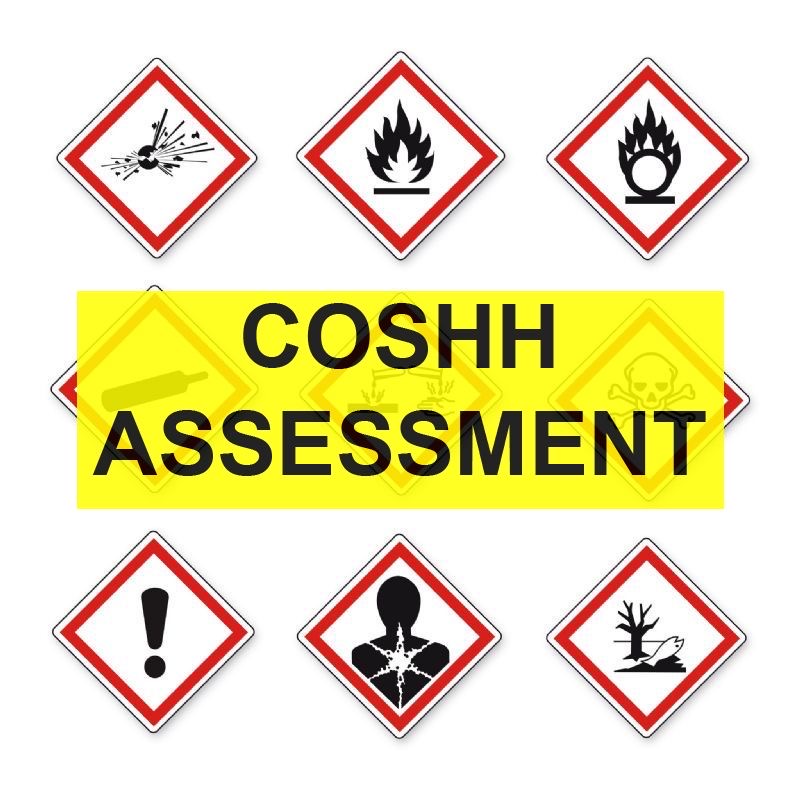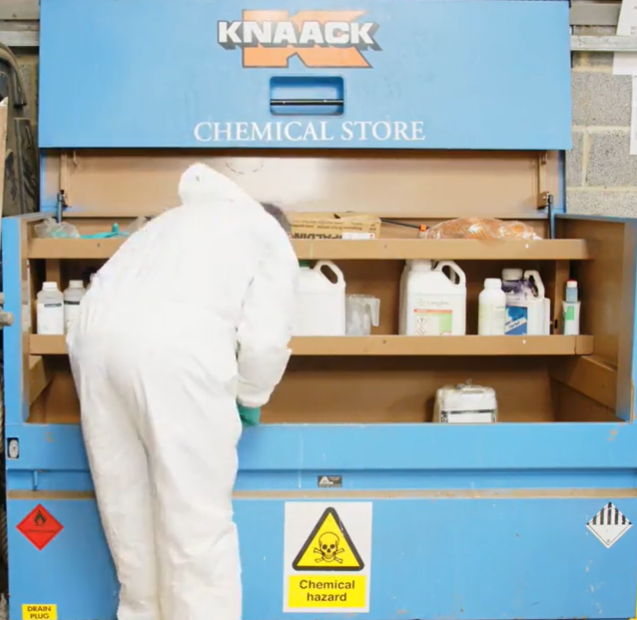Control of Substances Hazardous to Health (COSHH).
What is COSHH?
COSHH is a common term used that refers to a specific piece of health and safety legislation called ‘Control of Substance Hazardous to Health’. The term COSHH is often used when referring to chemicals we use in the workplace, but it also relates to other substances that can be hazardous to health.
Substances can take many forms and include:
|
chemicals |
dusts |
nanotechnology |
|
products containing chemicals |
vapours |
gases and asphyxiating gases |
|
fumes |
mists |
biological agents (germs) |
Essentially, if the packaging displays any hazard symbol, then it is classed as a hazardous substance. This may include everyday items such as cleaning products that may cause harm if ingested or come into contact with your skin. For this reason, these items should be included in your COSHH register.
It is your duty to keep employees and others safe when using, handling, storing and transporting articles and substances, this means Risk Assessing the substance and task at hand by:
Gathering information about the substances, the task and the working practices.
- Identify how the substances are hazardous
- What effects could they have?
- Find out who could be exposed and how
- Find out who is doing what and what does and could realistically happen
Evaluating the risks to health.
- What is the potential of a substance for causing harm?
- What is the chance of the exposure occurring?
- How often is exposure likely to occur?
- What levels are people exposed to and for how long?
Deciding on the necessary measures to control the risk.
- Selection of measures to prevent or control exposure
- Record your findings (Risk Assessment)
Manage and maintain control measures
- Making sure control measures are used
- Plan for emergencies
- Monitoring exposure
- Provide health surveillance if required
- Provide information, instruction and training for employees
Provide occupational surveillance when necessary
- Dermatitis
- Lung function (Chronic Obstructive Pulmonary Diseases)
- Occupational Asthma
- Silicosis
- Others specified outside of COSHH Regulations
It is your responsibility to manage the safe use of hazardous substances, this can be achieved by using the following steps:
Provide link to: ‘Working with substance hazardous to health’ in resource centre.
Risk Assessing
The HSE provide an on-line service to assist you when risk assessing the substance used in your workplace (here). When using this service you will need to input information from your Safety Data Sheet provided by your supplier.
When assessing the risk and deciding what controls are suitable this hierarchy could be useful. |
|
|
|
|
You may choose to risk assess using your own process, this is acceptable so long as all significant hazards are considered, and risk is suitably controlled. The hierarchy above may help with this. A simple COSHH risk assessment template can be found here (provide link to COSHH RA Example)
NB: Your safety data sheet will have first aid information included. Keep all safety data sheets readily available to first aiders for immediate reference.
FAQs:
Q: What is a Safety Data Sheet?
A: Sometimes referred to as a Material Safety Data Sheet (SDS/MSDS) this document provides you with all the technical data about the substance and includes the specific technical information you will need to conduct aa risk assessment.
Q; Where can I find my safety data sheet?
A: Suppliers of substances are legally required to give you a safety data sheet with the first consignment of your order. If you have lost this or you think it is out of date, ask your supplier for another one. Alternatively, safety Data Sheets can often be downloaded from the substance manufacturer’s website.
Q: What is an R and an S phrase?
A: R-Risk and S-Safety phrases are listed on your MSDS.
The R-Phrase will indicate the type of risk the substance represents i.e. R 20 = Harmful by inhalation.
The S-Phrase indicates the safety precaution that may be used to suitably control your hazardous substance i.e. S 22 = Do not breathe dust.
Note from Oct 2020 a new Global Harmonising System (GHS) has been introduced and will gradually phase out R & S phrases replacing them with H – Hazard statements and P-Precautionary statements that effectively do the same job. The HSE on-line risk assessment tool will continue to use both Risk phrases and Hazard statements for the foreseeable future.
Q: I have tried COSHH Essentials, and I don’t think my substance is covered?
A: You will need to carry out a risk assessment by other means. Please follow the link below which has a number of example COSHH risk assessments which you may find useful.
COSHH Risk Assessment example
Important: This example risk assessment shows the kind of approach cricket clubs might take. Use it as a guide to think through some of the hazards in your organisation and the steps you need to take to control the risks. Please note that it is not a generic risk assessment that you can simply put your organisation’s name on and adopt without any thought. This would not satisfy the law - and would not be effective in protecting people.
|
Organisation Name |
ABC Grounds Management Ltd |
Date of Assessment |
XX/XX/XXXX |
|||||
|
Department |
|
Assessment No |
COSHH 001 – Ride-on Mower |
Assessed by |
|
|||
|
Step 1 Substance |
Step 2 |
Step 3 |
Step 4 Action |
|||||
|
What is the task? |
Potential harm and to who? |
What are you already doing? |
What improvements do you need |
Who |
When |
Check |
||
|
Servicing ride-on mower – Petrol fumes, skin contact, eye contact.
|
Operator – Breathing in fumes dizziness, unconsciousness. Skin/eye contact causing irritation or Contact Dermatitis. |
Conduct task in a well-ventilated area. Provide suitable gloves and eye protection.
|
Move task outdoors when possible. Conduct regular skin inspections. Provide suitable disposable bin, with lid for soiled gloves. Provide spill kit with disposal instructions/process. |
Supervisor |
Immediate |
Complete xx/xx/xxx |
||
|
Others in workshop - Breathing in fumes dizziness, unconsciousness. |
Conduct task in a well-ventilated area.
|
Move task outdoors when possible.
|
Supervisor |
Immediate |
Complete xx/xx/xxx |
|||
|
Environmental harm Substance contaminating ground/drains etc |
Provide drip trays and spill kits. |
Provide covers for drains. |
Manager |
Immediate |
Complete |
|||
|
|
|
|
|
|
|
|
||
|
Further considerations: |
Action taken |
Action needed |
Who |
When |
Check |
|||
|
Provide information, instruction and training. |
Provided for H&S COSHH. |
Review training – to include toolbox talks to include environmental pollution prevention information. |
Manager |
Initial and periodical review |
|
|||
|
Supervision |
|
Provide ad-hoc supervision |
Supervisor |
Monthly |
|
|||
|
Emergency plans |
First aid provision Washing station |
Evacuation drills Environmental reporting. |
Manager |
6 monthly drills |
|
|||
|
Health surveillance |
Periodical – monthly skin checks by manager. |
Process in place to review by medical professional should it be required. |
Manager |
|
|
|||
|
Monitoring |
Daily supervision |
Periodically review processes |
Manager |
Annually |
|
|||
|
Step 5 |
Review your assessment –
|
|||||||
|
Review date: |
XX/XX/XXXX |
|||||||
|
Other hazards needing risk assessment attention: Flammable liquids (Fire hazard), slip hazards, manual handling, environmental, members of the public……….. |
||||||||
|
|
|
|
|
|
|
|
||
|
|
|
|
|
|
|
|
||



 Tweet
Tweet